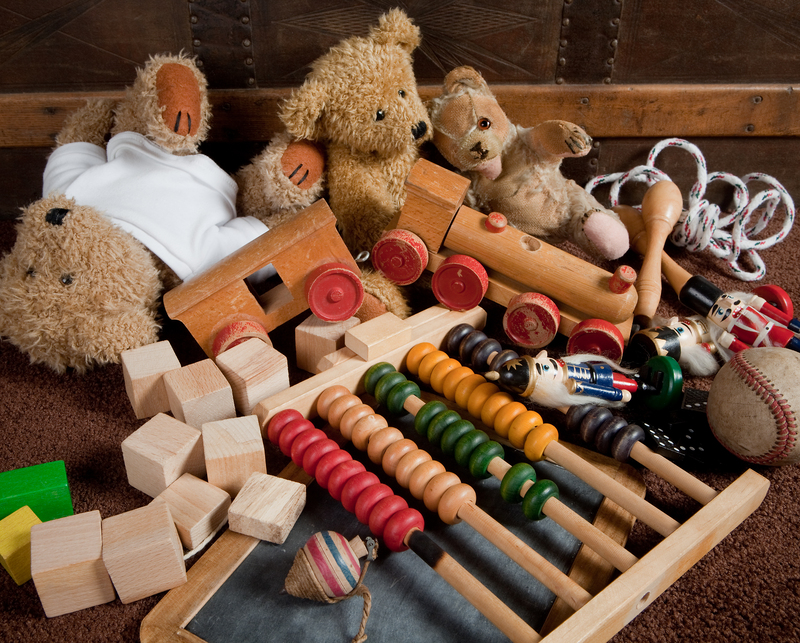Must-Know Tips for Freezer Storage
Posted on 11/06/2025
Must-Know Tips for Freezer Storage
Proper freezer storage is essential for preserving the freshness, flavor, and safety of your foods. Whether you want to save leftovers for another day, take advantage of sales, or prepare meals in advance, freezing food correctly ensures you can enjoy your favorite dishes anytime. In this comprehensive guide, you'll discover must-know freezer storage tips to maintain quality, prevent freezer burn, and organize your freezer like a pro.
Why Freezer Storage Matters
The freezer is one of the best tools in the kitchen for reducing waste and saving money. Freezing not only extends the shelf life of meats, vegetables, and fruits, but it also lets you store home-cooked meals for busy days. Optimized freezer storage reduces food spoilage and helps retain nutrients and taste. Adopting smart techniques can also free up precious space and make meal planning more convenient.

Essential Freezer Storage Tips
1. Know What You Can Freeze
Nearly all foods can be frozen, but some fare better than others. Most fruits, vegetables, meats, baked goods, and sauces can be frozen. However, items with high water content, like lettuce, cucumbers, and raw potatoes, don't freeze well because they become mushy after thawing. Dairy products that tend to separate, like yogurt or cream, also aren't ideal freezer candidates.
- Best foods for freezer storage: Cooked meats, bread, fruits, vegetables, soups, casseroles, sauces, cooked rice, and pasta.
- Foods to avoid freezing: Whole eggs in shells, cream-based sauces, soft cheeses, and carbonated drinks.
2. Use the Right Containers and Packaging
Proper packaging is crucial for storing food in the freezer. Air exposure leads to freezer burn, which affects both taste and texture. Use airtight containers, heavy-duty freezer bags, or vacuum-sealed bags for the best results. Always squeeze out as much air as possible before sealing.
- Choose freezer-safe containers made from glass, plastic, or silicone.
- Use aluminum foil, plastic wrap, or parchment paper for extra protection.
- Label everything with the contents and date before freezing.
3. Cool Foods Before Freezing
Placing hot foods directly in the freezer can raise the overall temperature and put other foods at risk. Always let food cool to room temperature before freezing. This also helps prevent condensation inside the packaging, which can cause ice crystals to form.
4. Portion and Label Everything
Divide large portions into smaller, meal-sized servings. This makes it easier to defrost just what you need and minimizes food waste. Label every package with the date and a description--frozen foods all look similar after a few months!
- Use a permanent marker for clear, long-lasting labels.
- Include reheating or cooking instructions if you're freezing prepared meals.
5. Maintain Optimal Freezer Temperature
Keep your freezer at 0?F (-18?C) or lower. This inhibits bacterial growth and preserves quality and nutrition. Use a standalone freezer thermometer for accuracy, as built-in thermostats can be inaccurate.
6. Practice First In, First Out (FIFO)
Always organize new additions to the back and move older items forward. That way, you use food before it deteriorates in quality. Rotate your stock regularly to prevent forgotten items from languishing in the depths of your freezer.
7. Prevent Freezer Burn
Freezer burn occurs when food is exposed to air, causing dehydration and oxidation. Although freezer-burned food is safe to eat, it becomes dry and tough.
- Wrap food tightly and squeeze air out of bags.
- Double-wrap delicate items like bread or pastries.
- Don't overload your freezer, so air can circulate efficiently.
8. Freeze in Flat Layers
For foods like soups, stews, and sauces, freeze portions in flat bags. Lay them flat on a baking sheet until solid, then stack to save space. This method improves freezer organization and shortens thawing time.
9. Blanch Vegetables Before Freezing
Blanching stops enzyme action that can cause a loss of flavor, color, and texture. Briefly boil vegetables, then plunge them into ice water before drying and freezing. This simple step helps keep veggies fresh-tasting after months of freezer storage.
10. Don't Refreeze Thawed Foods
Once a food has thawed completely, avoid refreezing it. Each freeze-thaw cycle compromises texture and flavor, and risks bacterial contamination. Only refreeze food that's been thawed in the fridge and has not been left out at room temperature.
Clever Organization Tips for an Efficient Freezer
An organized freezer helps you find what you need quickly, reduces waste, and makes meal prep easier. Use these freezer storage organization tips to streamline your kitchen routine:
- Use bins or baskets to separate meats, vegetables, baked goods, and prepared meals.
- Arrange food by type and frequency of use. Keep everyday items front and center.
- Stack flat bags and containers vertically to maximize space.
- Keep an inventory list attached to the freezer door so you track what's inside.
Regularly check your freezer for expired or unidentifiable items, and update your inventory list accordingly. This will help you avoid buying duplicates and keep your meals varied.
Frequently Asked Questions about Freezer Storage
How Long Can You Store Food in the Freezer?
- Meat (raw): Beef up to 12 months, chicken up to 9 months, pork up to 6 months.
- Cooked leftovers: Generally 2-3 months for best flavor and texture.
- Vegetables: 8-12 months if blanched first.
- Bread: 3-6 months.
How Do You Thaw Frozen Food Safely?
Always thaw frozen food in the refrigerator, in cold water, or using the microwave. Never thaw at room temperature, as this encourages bacterial growth. Plan ahead so your food thaws safely and evenly.
Can Glass Containers Be Used for Freezer Storage?
Yes, but make sure they're labeled as freezer-safe and don't overfill them (leave about an inch of space for liquid expansion). Sudden temperature changes can cause glass to crack or break, so let hot items cool before placing them in the freezer.
What is Freezer Burn and How Can You Prevent It?
Freezer burn occurs when food dries out due to exposure to air. Prevent it by using airtight packaging, not overloading your freezer, and keeping the temperature steady. Double-wrap delicate or high-moisture foods for extra protection.
Are There Foods That Shouldn't Be Frozen?
Yes. Foods that don't freeze well include raw eggs in their shell, watery produce (like lettuce), fried foods (they will lose crispiness), and soft cheeses (they become crumbly).

Pro Tips for Freezer Storage Success
- Freeze foods at their peak freshness for the best quality upon thawing.
- Double-bag foods with strong odors--like fish--to prevent smells from spreading.
- Remove as much air as possible from packaging to extend shelf life.
- Date everything and arrange your freezer for easy rotation.
- Don't open the freezer frequently or leave the door open for long--this keeps the temperature steady.
Summary: Unlock the Benefits of Smart Freezer Storage
Mastering the art of freezer storage and organization can save you time, money, and effort while ensuring you always have delicious meals at hand. By following these must-know freezer storage tips, you'll extend the life of your groceries, reduce waste, and enjoy hassle-free meal planning. Remember: use proper containers, maintain the right temperature, avoid freezer burn, label your items, and organize your freezer regularly. Your freezer can be your best kitchen ally--make the most of it!
For more tips on efficient kitchen management and food preservation, check out our other guides. Happy freezing!



